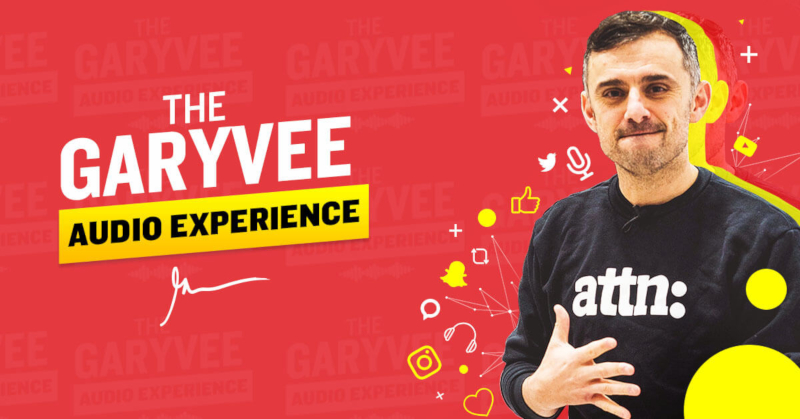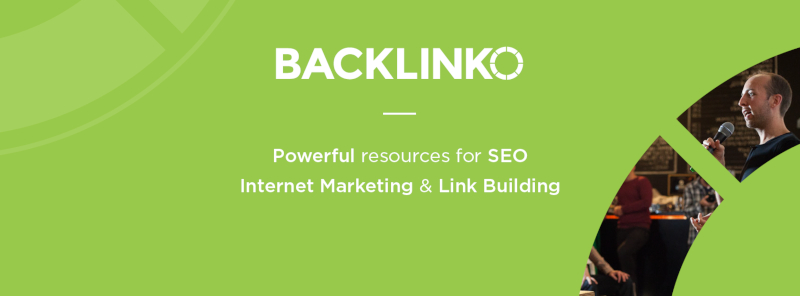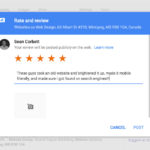Without great content, your website is just a stale online brochure.
But what if you’re not a writer, are too busy, don’t really know SEO, or have no extra budget to put towards a digital content strategy?
You can look for help on the web. Then the problem is knowing whose advice actually works.
So we are going to share some of our favorite digital marketing resources for local businesses.
These are from proven experts who have helped our own online marketing get to the next level (including our blog article that is top in Canada for the keyword “Google Robocalls”… beating out even Google themselves).
Overall, you’ll learn:
– the low-stress way to create loads of helpful content that will win the trust of potential customers
– how to direct more traffic to see this great content
– easy-win website tweaks so that visitors are excited to become customers
– ways to build your mailing list for visitors who are not ready to buy yet… but will be in the future

Effortless Digital Content Strategy – Gary Vaynerchuk (VaynerMedia)

(image source: https://www.garyvaynerchuk.com/podcast/)
Gary is now a famous author and runs a media empire.
But his first public success came when he took over the marketing for his family’s New Jersey liquor store in the late 1990s. By 2006, he made a commitment to put out a new video every few days. And he uploaded those videos to a weird new online service… YouTube.
When he started doing the videos, almost no one watched or cared. But he was relentless, and soon his views and comments increased, along with the profits for the business.
That momentum made him a legend to people in the wine industry and to many marketers.
He went on to start an ad agency, but kept that same dogged attitude of producing as much free and interesting content as humanly possible.
Gary’s Main Concepts:
- always be investing in and building your brand (consistently stand out, find followers, and keep engaging with them as often as you can)
- always be creating and distributing free content
- explore all the online options out there, even the newest or weirdest ones, to get the best value on your ad buys or to have the least competition for the audience’s attention
- Gary is currently very excited about the future of Voice Apps and about the comparatively low price of influencer marketing
Essential Resource:
The Pain It Solves:
We have seen 3 repeating online content issues with our clients for the last decade. This resource addresses them all.
1. People create content only when they think of it, rather than on a schedule. Then they eventually give up.
2. People either blow all their resources on a single piece of content and don’t get much from it, or they produce a ton of low quality content no one wants.
3. People post the same type of content in the same manner across all types of media.
Gary’s resource gives you a simple model to follow so you can easily commit to it, get multiple uses out of one piece of content, but still leverage each type of social media in a fresh way.
Summary:
Start with one major piece of content (called the “pillar”).
Ideally this is something you would have done anyway, as part of your everyday work. It could be a detailed proposal or sales pitch (that you have a staff member record on video or audio). It could be a talk you gave at an industry conference. It could be an existing powerpoint presentation. Or it could be a meeting you have with a client as part of a normal service call.
Sometimes you may have to create a new piece of content, but it helps to think about what you cover in a normal business day.
Anyway, the pillar content would ideally be uploaded to your website in the form of a blog post, or to YouTube in the form of a video.
Then the pillar content can be broken down into little bite-size chunks, called “micro content”.
That micro content is used, on all the different forms of social media and email marketing, to drive people back to the pillar content.
The concept of micro content is to give the audience something digestible without asking them to invest much time and energy into the pillar content (yet). And by making many little pieces of content, you touch on several different things that may appeal to different people. Of course, a few of these people will be interested enough to seek out your pillar. At that point they will have a much more intimate impression of you.
Finally, the micro content is much easier to share (and easier to go viral, having your audience do the work of bringing you new traffic). It also allows you to get real feedback on what concepts are most interesting to your audience.
Then you repeat the cycle with a new piece of pillar content.
Search Ranking Wizardry – Brian Dean (Backlinko)

(image source: https://backlinko.com/)
Brian Dean is always on top of the latest SEO developments.
He also writes giant guides that can basically take you from zero to intermediate knowledge in one go.
The best part of learning from Brian is that he writes in a very clear, step by step way, with lots of examples. And he gives advice based on what actually worked for him and his students.
Brian’s Main Concepts:
- detailed (long-form), helpful content beats fluff; focus on quality over quantity
- understanding the intent of a searcher is key (get in their head, what do they want to find / happen)
- updating old content is sometimes better than spending time making new content
- technical SEO can be broken down into actionable steps that a non-expert can use
Essential Resource:
The Pain It Solves:
Often a small business owner will fixate on SEO changes that won’t have any real impact on their search ranks. They also struggle to understand the concepts, potentially leading to a waste of money or being taken advantage of by low quality providers.
This resource gives you a bunch of different ideas (you can pick any one or two, rather than having to learn every single thing there is to know about SEO).
Then you can quickly try them out, by following the steps and all the screenshots he shows.
Summary:
Think about what humans want when they are searching, and then how Google tries to give it to them. So instead of getting bogged down in the “tech” stuff, you focus on what people are looking for and expecting.
It helps to know a few of the proven signals that Google looks for when they rank your web content (read the resource for these details).
You can improve your existing content by tweaking your headlines, page titles and descriptions, and the first few paragraphs of your text. This is all to get people to want to check out your content, and then to actually stay on the page and keep reading it.
Google rewards websites that keep users on their page (and make users want to check out more pages), and Google punishes websites that drive people away. Or to put it another way, how your traffic interacts with your website is just as important as getting more traffic.
There are tons of other tips, and some of them are advanced. Don’t worry if they don’t make total sense to you right now. Move on to another tip that seems like it would help, and focus on putting it into effect.
Sometimes just reading about more advanced ideas will give you a much better understanding of how SEO actually works.
Finally, since SEO is always developing, it’s really helpful to check Brian’s website each month. He’ll keep you up to date on the major changes you need to know, and explain what’s working right now.
Hypnotic Copy – Neville Medhora (Kopywriting Kourse)

(image source: https://kopywritingkourse.com/)
Neville is a copywriter, entrepreneur, and marketing trainer.
Like all the resources listed in this article, he actually proved out his concepts in the real world (making money in the process) before he started to teach them to others.
Following along with his advice, business owners can easily improve their communication with customers, even if they hate writing.
Neville’s Main Concepts:
- improving your copy is the cheapest and most effective way to start getting more conversions right away
- obsession with being overly professional or polished rarely helps, and probably stops you from just getting things done
- most humans follow the same psychological patterns, and if you know those patterns you can command their attention
- messages need to be about the customer, how they feel or what they get, and not about you
- telling real stories (about how your service/product solved a pain) is a powerful way to get people to pay attention
Essential Resource:
The Pain It Solves:
Most small business websites have horrible About Us pages that feel like soulless reports written by corporate robots. Or they are just super vague and focus on what the company does (basically a bad re-write of the Home page).
Despite the concept that most readers only care about themselves, the About Us page is a rare opportunity to talk about you and your business.
Anyone who reads your About Us page is giving you a chance to connect with them, and build trust and excitement in what you have to offer. Neville’s resource will show you how to do just that.
Most of this resource was written by a guest contributor to Neville’s blog, Marian Schembari. But he commissioned it and published it under his brand.
Summary:
The About Us page has two jobs — to get people excited about you, and then to direct them to the next step in the process (so this page needs a call to action just like a sales page).
Even though the About Us page is focused on your business, you still start it by talking about how you will help the reader (Marian calls this the “value proposition”). And then you put an image in the reader’s head about how others have benefited from your service.
You can figure out what sort of messages would be important by answering the short list of questions included in the resource.
So you’re not really even “writing”, you are just thinking about the different ways you help people or what they care about, and then jotting down notes.
Then you lay out your About page following this general structure: Value Proposition, Day Dream, Differentiator, Story, Offering, Call To Action. She explains each section in detail.
We’ve found that it applies to nearly every small business!
Ruthless List Building – Noah Kagan (Sumo)

(image source: https://okdork.com/)
Noah Kagan was an early employee at Facebook and Mint. He created the Mint marketing plan, and grew their mailing list and audience from zero to 1 million users.
Then he started his own companies (AppSumo and Sumo) using the same principles.
Sumo is an email list building tool for websites, and in order to make it more helpful, he has his staff write a ton of informative how-to articles.
He also writes about general business/marketing topics on his blog https://okdork.com.
Noah’s Main Concepts:
- validate an idea before spending money and time to develop it (ie. see if one person will pay for it first)
- don’t start working on a campaign until you have a clear goal that you want to achieve and a timeline for doing it, then focus on it daily and track your progress
- rather than bouncing around and trying everything, stick to the 1 or 2 areas that are bringing you the best results (after the validation stage)
- immediately start building an email list
Essential Resource:
Debunking The Biggest List Building Myths That Cost You Money
The Pain It Solves:
Most people have severely limiting beliefs about collecting emails and then marketing to them. Like “popups don’t work”, or “everyone has a form to ‘join the newsletter’ so we should, too”.
This resource will put you into the right frame of mind for building your email list.
It also gives you a few actionable ideas to start list-building today. It was commissioned by Noah, and written by Sean Bestor.
Summary:
Simple headlines convert more than cutesy or clever headlines. Popups work. You can still collect email addresses on mobile. You need to be in a giving — not asking — frame to get emails. And you should create offers that appeal to your ideal target customer, not any old person who comes across your site.
You’ll have to read the resource to get an explanation of why all those things are true. Plus there are even more myths busted, and tips to collect.
The point is to think clearly about collecting emails (rather than getting too bogged down), and then go do it.
They also include a free “Beginners List Building Bundle” for download. It helps you write headlines and figure out ways to get more email addresses.
You’ve Got What You Need For Online Marketing Help, Now What?
Each of these guys have tons of useful content.
The resources we chose are just the tip of the iceberg. But they do work well for small local businesses, and they are all laid out clearly so you can just start applying them right away.
We recommend picking one resource that speaks to you at this moment, reading through it a few times, and then giving the advice a shot.
[et_bloom_inline optin_id=”optin_4″]





It will be a great help in Digital Marketing. Thank you for sharing this one.
That’s a great list, been following Neville and Noah for a long time. They’re the real deal.